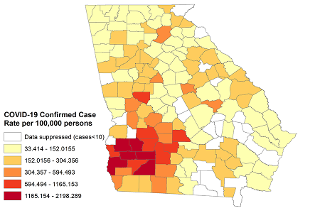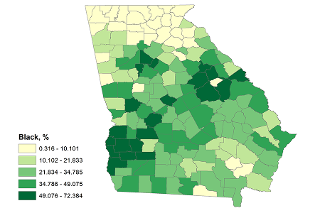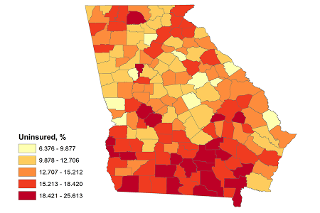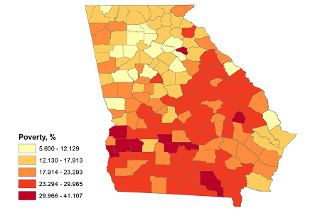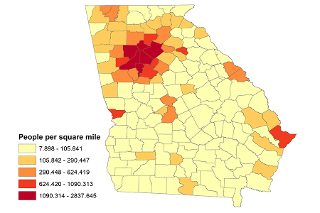MSM Researchers Find GA Counties with More Black Residents Have Higher Rates of COVID-19
Quick Facts:
- 80% of hospitalizations for COVID-19 during March 2020 in Georgia were non-Hispanic black.
- As of April 27, 2020, 35% of positive cases in Georgia were among African Americans.
There are widespread racial and ethnic disparities in COVID-19 across the nation. The pandemic is exacerbating existing racial and ethnic disparities, resulting in higher burdens of disease and death in communities of color. These disparities have been observed at the individual patient level.
In order to identify county-level characteristics associated with high COVID-19 burden, researchers from the National Center for Primary Care at Morehouse School of Medicine studied sociodemographic factors as predictors of COVID-19 confirmed case rates using linear regression models. They specifically examined the state of Georgia, finding counties with a larger percentage of black population had higher confirmed COVID-19 case rates, independent of proportion of people in the county who were poor and uninsured. In other words, comparing two counties with equal percent of residents in poverty, percent of residents uninsured, population density (rurality) and unequal proportions of the percent of black population, the county with a larger black population would have higher COVID-19 confirmed case rates. As the county-level percent black population increased by 1%, the COVID-19 confirmed case rate increased by 2.3%.
Key Findings
- In fully adjusted models, every 1% increase in the proportion black population in the county resulted in a 2.3% increase in the county COVID-19 confirmed case rate.
- None of the other ecologic variables (county-level poverty, uninsured rate, population density) were significant.
- County-level choropleth maps of COVID-19 confirmed case showed high rates of COVID-19 infection in the southwest portion of the state.
- Spatial patterns of county COVID-19 confirmed case rates (Figure 1) were visually similar to the pattern of proportion of black population in the county (Figure 2), as well as uninsured status (Figure 3) and poverty level (Figure 4).
“We found the percent of black residents in the county had a statistically significant relationship with COVID-19 confirmed case rates, but percent uninsured, percent living in poverty and population density did not have this relationship,” says Anne Gaglioti, MD, Associate Professor of Family Medicine and Associate Director for Research, National Center for Primary Care at MSM.
These findings demonstrate the importance of collecting and reporting COVID-19 positive cases and deaths by race and ethnicity.
Dominic Mack
Research Implications
“This changes the traditional narrative around disparities, that often attribute health disparities to living in poverty and/or being uninsured. We found that race has played an independent role,” says Megan Douglas, JD, Assistant Professor, Department of Community Health and Preventive Medicine and Policy Director, National Center for Primary Care at MSM.
“These findings demonstrate the importance of collecting and reporting COVID-19 positive cases and deaths by race and ethnicity. Recognizing that this crisis is hitting communities differently, this study should guide resource allocation for screening, testing and treatment in Georgia,” says Dominic Mack, Professor, Family Medicine and Director, National Center for Primary Care at MSM.


